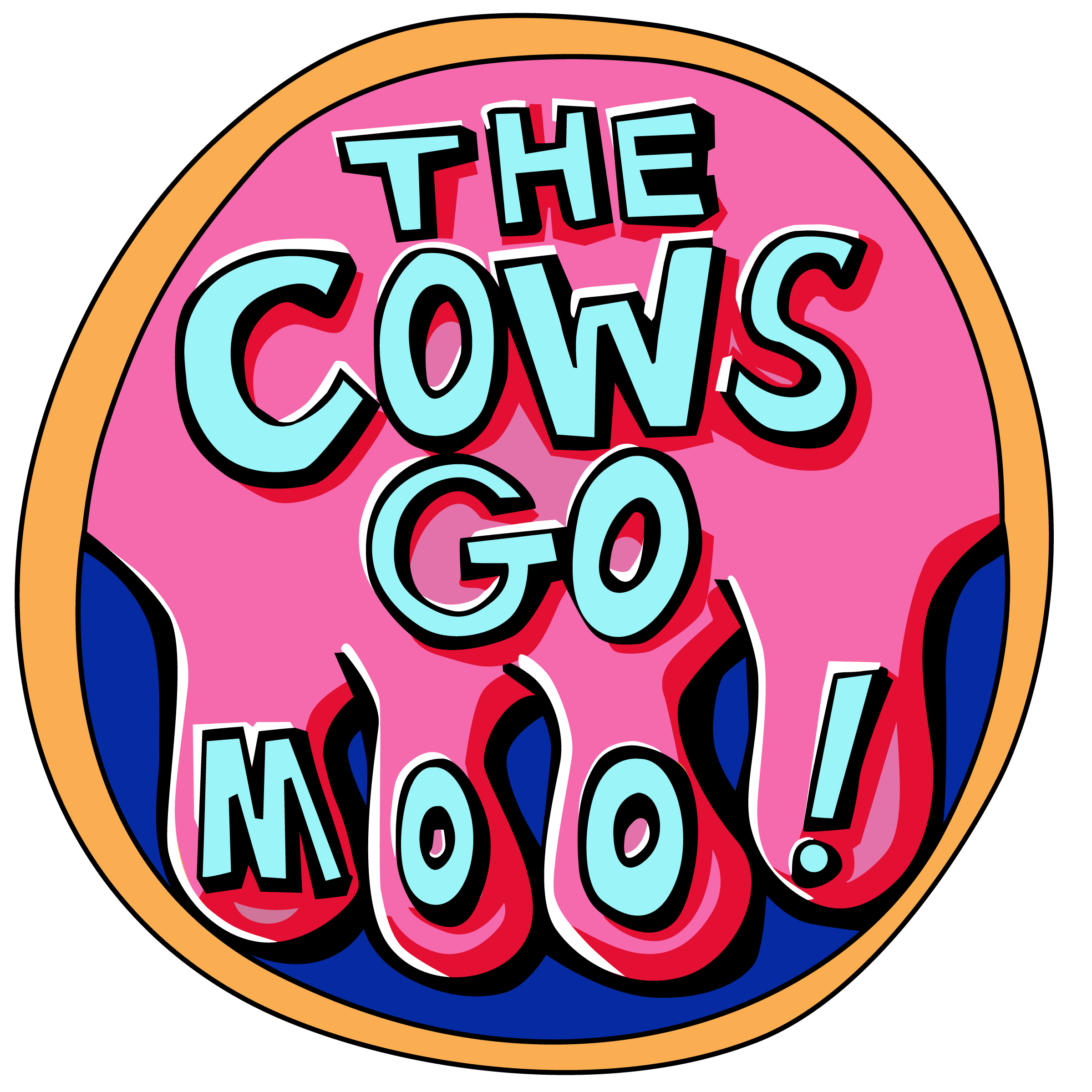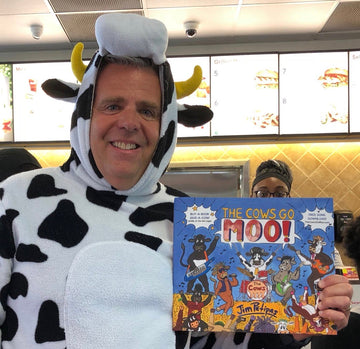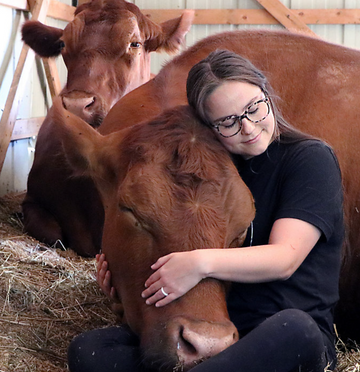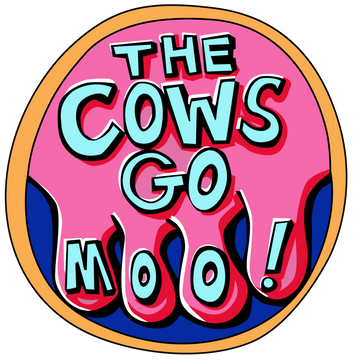I have always loved cows! Not just for what they produce, ice cream, milk, cheese, and beef, but because they are wonderful gentle giants with unique personalities that make me laugh!
Whether or not you live on a farm surrounded by cows, there are some amazing facts I think anyone would find fascinating. They really are incredible animals.
Here are 30 facts!
-
All cows are female! Males are called bulls or steer. Before having a calf for the very first time, a female is called heifer. Then, once she has her first calf, she becomes a cow.
-
There are over 800 different cattle breeds recognized worldwide. For example, beef breeds are raised for their meat, and dairy breeds are raised to produce milk.
-
What do cows eat? Grass and sometimes grain. Cows don’t eat meat – ever. They are “vegetarian fed”. Therefore, if you ever see “vegetarian fed” on a beef label, you know it is a marketing term to increase sales.
-
Cows can see almost 360 degrees.As a result of this near-panoramic view, they can watch for predators from all angles. However, they don’t see well straight in front of them, and that is why they will typically turn their head to look at you.
-
Cows have an amazing sense of smell and can detect odors up to six miles away.
-
Cows are very social animals and don’t like to be alone. For example, when a cow isolates herself it’s usually because she is sick or about to give birth.
-
Cows have no upper front teeth. So when they’re eating food, they press their sharp bottom teeth against the top hard palate of their mouth to cut blades of grass.
-
A cow has 32 teeth and will chew about 40-50 times a minute.
-
A cow will chew for up to eight hours a day, and can move their jaws about 40,000 times a day.
-
“Making hay” is more than a saying, it’s something farmers do every year. Since grass isn’t available in the winter for cattle to eat, it’s very important that farmers harvest grass so that cattle can eat it in the winter. That process is called “making hay”. This is a very busy and critical time of the year on any cattle farm. In short, the fields must produce enough hay in order to feed the animals through the winter.
-
On average, one cow will eat five bales of hay during a typical winter. Each bale of hay weighs 600 pounds. Cattle love hay and they often follow the tractor whenever they see it coming.
-
Cows spend about 10 hours a day lying down,and they will stand up and lay down about fourteen times a day. Cows can even sleep while they’re standing!
-
The first dairy cows came to America in the 17th century, arriving in Jamestown, Virginia in 1611.
-
Before modern milk delivery, when people traveled and wanted milk, they had to take their cows with them.
-
Milk is better for cooling your mouth after eating spicy food. Milk products contain casein, a protein that cleanses burning taste buds.
-
The main breeds of dairy cows are Holstein, Guernsey, Jersey, Brown Swiss and Ayrshire.
-
Cows are ruminants, which are cud chewing mammals. Other ruminant animals are sheep, giraffe, goats, and deer, just to name a few. Cows don’t have four stomachs as some like to say, but they have 4 digestive compartments in one stomach – the rumen (this is where the cud comes from); the reticulum; omasum; and abomasum (this is sort of like a human’s stomach).
-
The main stomach of a cow, the rumen, holds up to 50 gallons of food that has been partially digested. To put that in perspective, a bathtub can usually hold 30-50 gallons of water. A cow will consume about 40 pounds of food in a day.
-
Farmers use ear tags as an animal identification system that helps keep track of important information about each animal, such as birth date, gender, age, weight, etc.
-
Cows can see color. They can even see red. When you see a Matador waving a red flag at a bull (a male “cow”), the bull charges because of the flag’s movement.
-
Cows are warm blooded. Their average body temperature is 102 degrees Fahrenheit.
-
Cows hair protects them from the cold. In the winter, a cows thick skin and hair is a natural insulator that protects them from the bitter cold.
-
When you purchase a cow from a farmer, there will be about 450-500 pounds of edible beef. Of this, 200+ pounds will be ground beef. The remaining beef is in a variety of cuts like steaks, roasts, ribs, brisket, tenderloin, etc.
-
Nearly every family in the U.S. had its own cowin the 1850’s.
-
All cattle (even grass-fed ) sometimes need to eat something other than grass in order to be healthy, like mineral. Like all animals, cattle require a balance of nutrients for survival. They receive these nutrients through their diet, which provides six basic cattle nutrients: water, carbohydrates, fats, protein, vitamins and minerals.
-
Almost 2,000 quarter pound hamburgers can be made from the ground beef in one cow.
-
Cows are very social and develop bonds with each other! They even have preferences for who they choose to spend their time with.
-
Cows have between 25,000 and 35,000 taste buds. This is two to three times more taste buds than humans have! This large number of taste buds help them tell apart poisonous and non-poisonous plants. They also allow cows to enjoy both sweet and salty foods so that they can get the energy and nutrients they need to stay healthy.
-
Despite popular belief, cows are very smart! Cows need to be smart because they interact with each other in complex ways. They are curious and can think critically to solve problems. They even show excitement and signs of pleasure when they solve problems! This suggests that cows are very self-aware and can understand their own actions.
-
The hamburger debuted at the 1904 World’s Fair in St. Louis, Missouri. Mooya!





